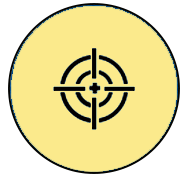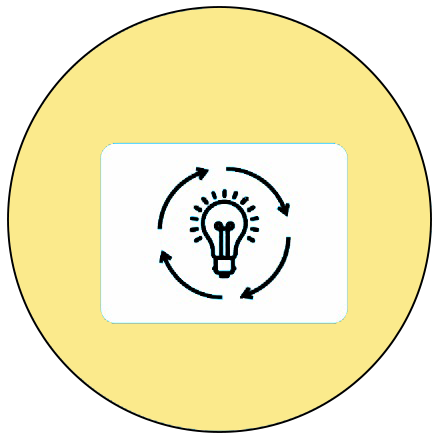
Multiplication
Part 2 – Repeated Addition
Learning Outcome
Recognises multiplication as repeated addition and uses repeated adding to solve simple multiplication problems.
 Objective
Objective
Children will be able to understand multiplication as repeated addition of equal groups.
 Prerequisites
Prerequisites
Children
- identify and create equal groups
- add single and double-digit numbers
- understand number patterns
The teacher can have a simple check for understanding at the beginning of the lesson by asking the children to add the same number several times.
 Pre-teach Vocabulary
Pre-teach Vocabulary
Children should be familiar with the terms ‘repeated addition’, groups of, ‘multiply’, ‘times’, ‘altogether’, ‘total’, ‘sum’, ‘each’, ‘rows’, and ‘columns’.
Introduction: From Equal Groups to Repeated Addition
Materials required:
- Counting objects (blocks, buttons, and counters).
- Number cards (1-10)
- Equal group flashcards
- Chart paper with number lines
- Markers/crayons
- Pictures showing equal groups (flowers, animals, etc.)
- Worksheets for practice
The teacher begins by reviewing equal groups from the previous lesson.
- The teacher places 3 groups of 4 blocks on the table.
- Asks the children, ‘How many blocks are there in each group?’ Answer: 4.
- ‘How many groups do we have?’ Answer: 3.
- ‘How can we find the total number of blocks?’
- Guide the children to count by ones: ‘1, 2, 3,… 12.’
- Instruct the children that there is a faster way to add and then show them how to add: 4 + 4 + 4 = 12.
Teaching Method: I Do – We Do – You Do
I Do (Teacher Modeling):
The teacher announces, ‘Today, we’re going to learn that when we have equal groups, we can use repeated addition to find the total. This is a first step toward multiplication.’
- Display 4 groups with 5 objects in each group.
- Say aloud, I have 4 equal groups with 5 objects in each group.
- To find the total, I can add 5 + 5 + 5 + 5 = 20.
- Write the above on the board, that is, 5 + 5 + 5 + 5 = 20.
- Say aloud, I am adding the same number over and over. This is called repeated addition.
- Show another example with 3 groups of 6 objects.
- Say aloud, ‘Now I have 3 equal groups with 6 objects in each group. I can write this as 6 + 6 + 6 = 18’.
- Summarise and say aloud:
- When I have equal groups, I can add the same number repeatedly.
- The number I add is the number of objects in each group.
- The number of times I add it is the number of groups I have.
We Do (Guided practice):
The teacher then says, ‘Let’s practice repeated addition together.’
Activity 1: Total through Repeated Addition
- Display 5 groups of 3 stars on the board.
- Ask the children how many groups are seen. Answer: 5.
- How many stars are there in each group? Answer: 3.
- Let’s write this as repeated addition. Guide the children to write 3 + 3 + 3 + 3 + 3.
- Now let us find the total. Count together to get the total as 15.
- Repeat with different examples, gradually assisting the children to do more of the calculations.
Activity 2: Matching Groups to Repeated Addition
- Show picture cards of equal groups (e.g., 2 groups of 7 flowers, 6 groups of 2 birds).
- Instruct the children to write the corresponding repeated addition expression.
- Solve together to find the total.
You Do (Independent Practice):
Children work in pairs or individually with drawing materials.
Give them problems such as:
- Draw 3 boxes with 5 stars in each box. Write the repeated addition.
- Draw 7 flowers with 2 petals each. Write the repeated addition.
- Draw 4 houses with 3 windows each. Write the repeated addition.
The teacher asks guiding questions like, ‘How many groups do you have? How many pictures are there in each group? How can you write this as repeated addition?’
Video: Repeated Addition – Coming soon
ISL Video: Repeated Addition – Coming soon
Flashcards: DIY flashcards – Coming soon
Flashcards: Printable flashcards – Coming soon
Flashcards: The train engine – Coming soon
Flashcards: The carriage – Coming soon
Activity 1: Repeated Addition Number Train
Objective:
Children will create visual representations of repeated addition using a ‘number train’ model, reinforcing the connection between equal groups and repeated addition.
Importance of the activity for children:
Helps in developing:
- Gross motor skills (Moving around, sorting)
- Fine motor skills (Picking a card, hand-eye coordination)
- Cognitive skills (Visual representation, connecting concepts, and pattern recognition)
- Social skills (Cooperation, waiting for their turn, playing together)
- Language skills (Concept development like equal group and unequal group)
- Emotional skills (Builds confidence in numeracy, promotes a sense of achievement that boosts self-esteem, and encourages pride in learning new skills)
Resources required:
- Train engine and carriage templates (paper cutouts)
- Number cards (1-10)
- Small adhesive dots or stickers
- Coloured pencils or markers
- Scissors and glue
- Large chart paper for display
Setting for the activity:
The activity can be done indoors or outdoors with open floor space.
Type of activity: Individual or Partner activity
Preparation of activity:
- Cut out paper train engines and carriages (enough for each child).
- Prepare number cards in sufficient quantity for each group.
- Prepare instruction cards with different repeated addition problems.
Role of the teacher: Demonstrator, Observer and facilitator
Procedure:
- Introduction:
The teacher says, ‘Today we’re going to build number trains! Each carriage will show equal groups, and together they’ll help us to see repeated addition.’ - Demonstration:
- The teacher shows a completed train with 3 carriages, each containing 4 dots.
- The teacher says, ‘This train shows three carriages, with four units each. That is, 4 + 4 + 4 = 12 units.’
- Points out the engine represents the problem, and each carriage represents one group.
- Train Building:
- Children receive a problem card (e.g., 5 groups of 3 each).
- They take one engine and 5 carriage templates.
- On each carriage, they draw or place 3 dots/stickers.
- They connect the carriages to form a train.
- On the engine, they write the repeated addition equation, 3 + 3 + 3 + 3 + 3 = 15.
- Math Connection:
- Children count the total number of dots on their train.
- Write the complete equation showing the total.
- Share their trains with partners, explaining the repeated addition.
- Train Display:
- Create a class “Train Station” bulletin board.
- Children display their trains grouped by number of items per group.
- Discuss the patterns they notice (e.g., all trains with 2 dots per carriage show even number totals).
Observations:
The teacher observes the children while engaged in the activity to assess if the children can
- Correctly represent the given number of equal groups.
- Understand that each carriage represents one group in the repeated addition.
- Correctly calculate the total using repeated addition.
Conclusion:
Children create a visual model that reinforces the concept of repeated addition and its relationship to equal groups.
Video: Repeated addition number train – Coming soon
ISL Video: Repeated addition number train – Coming soon
Activity 2: Act It Out
Objective:
Children will physically demonstrate repeated addition with equal groups.
Importance of the activity for children:
Helps in developing:
- Gross motor skills (Moving around, running)
- Fine motor skills (Picking a card, hand-eye coordination)
- Cognitive skills (Visual discrimination, concentration, and decision-making)
- Social skills (Cooperation, waiting for their turn, playing together)
- Language skills (Counting aloud, articulating)
- Emotional skills (Builds confidence in numeracy, promotes a sense of achievement that boosts self-esteem, and encourages pride in learning new skills)
Resources required:
- Open space in the classroom or playground
- Number cards (1 to 5)
- Group size cards (2 to 5)
Setting for the activity:
The activity can be done in an open space where children can move around freely.
Type of activity:
Whole class activity with small group demonstrations.
Preparation of activity:
Create number cards that indicate how many groups to form and group size cards that indicate how many children should be in each group.
Role of the teacher: Facilitator, instructor, and observer
Procedure:
- Select a number card (e.g., 4) and a group size card (e.g., 3).
- Announce for volunteers to form the specified number of groups (4) with the given number of children in each group (3).
- Instruct the class to count aloud the total number of children: ‘3, 6, 9, 12’.
- Write on the board: 3 + 3 + 3 + 3 = 12.
- Repeat with different combinations of groups and group sizes.
- For each demonstration, tell the children to
- Say aloud the number of groups.
- Say aloud the number of children in each group.
- Count the total using repeated addition.
- Write the repeated addition equation in their notebooks.
Suggested variations:
- Use physical objects like pencils or books instead of children for the demonstration.
- Incorporate movement by having children jump or clap in equal groups while counting.
Observation: The teacher observes the children engaged in the activity to ensure that
- Children will observe how repeated addition relates to counting in equal groups.
- The teacher will observe:
- How well children grasp the concept of repeated addition.
- Children’s ability to count in multiples.
- Children’s understanding of the relationship between equal groups and repeated addition.
Conclusion:
Children will understand that repeated addition is adding the same number multiple times, which happens when we have equal groups.
Video: Act it out – Coming soon
ISL Video: Act it out – Coming soon
Assessment
The teacher can give the practice worksheet to children, which can be followed by an assessment worksheet.
Worksheet: Practice – Coming soon
Worksheet: Practice (Enlarged) – Coming soon
Worksheet: Assessment – Coming soon
Worksheet: Assessment (Enlarged) – Coming soon
Cross-Curricular Connection:
- Physical Education Class:
Play games that reinforce repeated addition, such as forming equal teams and adding up scores. - Art Class:
Create patterns that show repeated addition (e.g., groups of shapes that repeat in equal units).
Check list for teachers:
| Activity | Yes | No | Sometimes |
| Children can: | |||
| Write repeated addition for given equal groups | |||
| Calculate the total in a repeated addition problem | |||
| Solve simple word problems and represent repeated addition with drawings or objects | |||
| Complete the activities in the given time | |||
| Do the activity independently | |||
| Express verbally and through actions, expressions or gestures | |||
| Enjoy teamwork, appreciate others and are willing to learn from others |
Home Activity: Everyday Repeated Addition
Ask children to find 3 examples of repeated addition at home (e.g., 4 chairs with 4 legs each, 3 plates with 6 biscuits each). For each example, they should draw a picture, write the repeated addition equation, and calculate the total.
Adaptations for addressing learner variability: Adaptations and strategies – Coming soon
Teacher Resource Document – Coming Soon
| Source and Attribution of images: All images used in the above Assets and Aids are originally created. |
| This digital material has been developed by the Sri Sathya Sai Vidya Vahini Inclusive Education Project, a unit of Sri Sathya Sai Central Trust, Prasanthi Nilayam, as a collaborative offering in the service of our nation. |